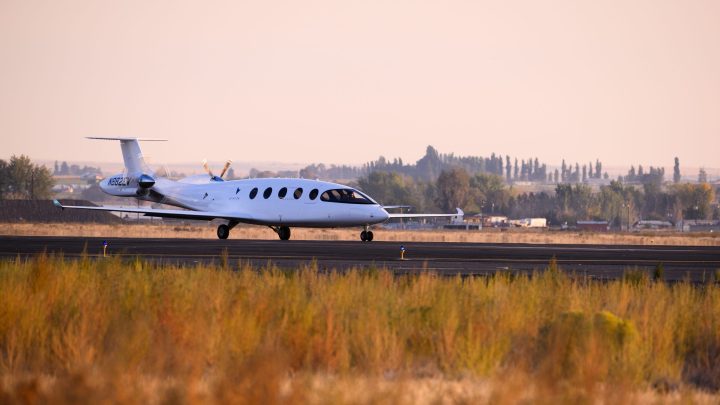
Could electric planes tempt Americans to fly short distances instead of driving?
Could electric planes tempt Americans to fly short distances instead of driving?

The aviation company Surf Air Mobility will go public tomorrow on the New York Stock Exchange, in a direct listing. The company provides regional flights between 50 to 500 miles and is developing an electric engine to power planes during those jaunts.
Right now in the United States, the vast majority of these shorter trips are taken by car, according to analysis by McKinsey. But Surf Air is just one of many aviation companies betting that in the future, those shorter trips are going to be cheaper, more convenient and potentially more sustainable on an airplane.
It used to be pretty common to fly short distances back in the ’60s and ’70s, said Robin Riedel of the McKinsey Center for Future Mobility.
“And what happened is, over time, you know, cars get better and more convenient, roads get better. And at the same time, aviation got a little bit more cumbersome,” Riedel said.
These days, roads are more congested. At the same time, the country has 5,000 airports, many of which are underused: Most air traffic goes through only 30 of them. That’s why companies like Surf Air see an opportunity in what’s called regional air mobility.
“They’ve recognized that market is untouched,” said Matthew Clarke, a professor of aerospace engineering at the University of Illinois at Urbana-Champaign.
He pointed out many companies are working on electric-powered engines whose limited range could make them a good fit for these relatively short flights. Their engines are also easier to maintain than ones powered by jet fuel.
“Electric propulsion typically is a few orders of magnitude more robust because there are less moving parts, and therefore it requires less maintenance, is cheaper to operate,” Clarke said.
Hybrid and electric engines also require less or no fuel, cost savings that could be passed on to the consumer.
One major catch? In the U.S., electric passenger planes are not yet approved for public use.
“The regulators do a great job on keeping everybody safe. But that is a challenge for companies to overcome on how do we get these things certified, and really prove that they’re safe for the general public to use?” Riedel asked.
And the general public has to want to take these short flights at all, said Elan Head, senior editor of The Air Current, a trade publication.
“Right now it’s a hypothesis. It’s something that on the surface makes a lot of sense. But the fact is that it’s going to face really stiff competition from personal vehicles in the U.S.,” Head said.
And, Head added, once you get to your destination, you may still need a car to get around.
There’s a lot happening in the world. Through it all, Marketplace is here for you.
You rely on Marketplace to break down the world’s events and tell you how it affects you in a fact-based, approachable way. We rely on your financial support to keep making that possible.
Your donation today powers the independent journalism that you rely on. For just $5/month, you can help sustain Marketplace so we can keep reporting on the things that matter to you.

















